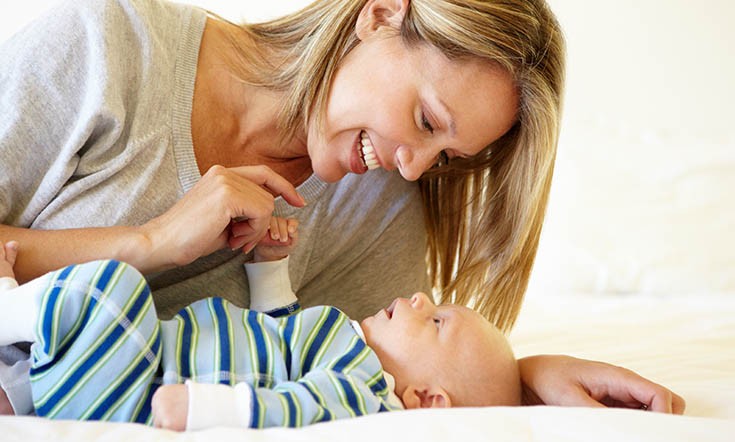

Now that your baby has been born, watching newborn baby development is going to be one of your most important pastimes. Either you will be doing it “officially” by taking your little one to developmental checkups, or you will be doing it in your own private way by keeping a scrapbook of baby development milestones. To a certain extent, your friends will also be doing it when they tell you how much your baby has grown since they last saw you when they say things like, “Wow! She’s already smiling!” or “He’s started sitting”! He wasn’t even close to that on the last time that I saw him!
Let’s take a look at the various ways that you will be watching your baby’s development over time.
Looking at Baby Development Week by Week
Newborn babies are changing all the time, and at the beginning you will be watching their weekly baby development. During that time, you will probably take a lot of baby development pictures – of their first smile, their first laugh, lying on their play-mat, in the crib, or looking alert for the first time as they lie on Grandma’s lap.
As you log each baby milestone, putting all the pictures into a scrapbook or photo album, it is important to remember that normal baby development does not always go by the book. For this reason, you should never compare your baby’s growth and development with your neighbour’s infant. Each child has their own pace at which they grow, and provided that your baby is progressing and happy, there is nothing to worry about if they seem to be a few weeks behind their cousin or your friend’s baby. Obviously, if there is any real cause for concern, you should discuss it with your doctor or healthcare professional. It is also vitally important to keep up with developmental checkups to make sure that any potential problems are detected before they become too serious and can be dealt with straight away.
Baby Development Month by Month
By the time a baby is about three months old, you will start looking at their development month by month. In fact, as a baby grows older, baby growth stays steady and constant, but the changes are less radical and more gradual. Over the coming months, you will watch your baby learn to do more things.
The various aspects of baby development that you will monitor are:
- Sleep changes
- Stages in feeding baby – from breast milk or formula in the beginning to the gradual introduction of solids
- Baby language development – from crying to early vocalisations and eventually words
- Physical changes – learning how to roll over, move, crawl, sit, stand, and eventually walk
- Baby growth – Weight gain, growing taller, and when the hair starts to grow in
- Cognitive and motor development – How the baby learns to interact with the world around them, recognising other people and their favourite toys
Apart from being a preventative health measure, logging infant development can be very exciting, especially if you don’t constantly compare your child to others. Keep all of the photographs, growth charts, and other memorabilia in a scrapbook, and you will create a fascinating record of your baby’s development that will be very individual and unique.






















